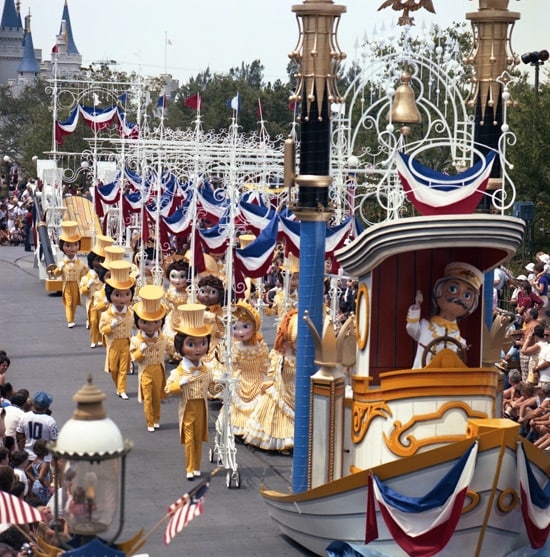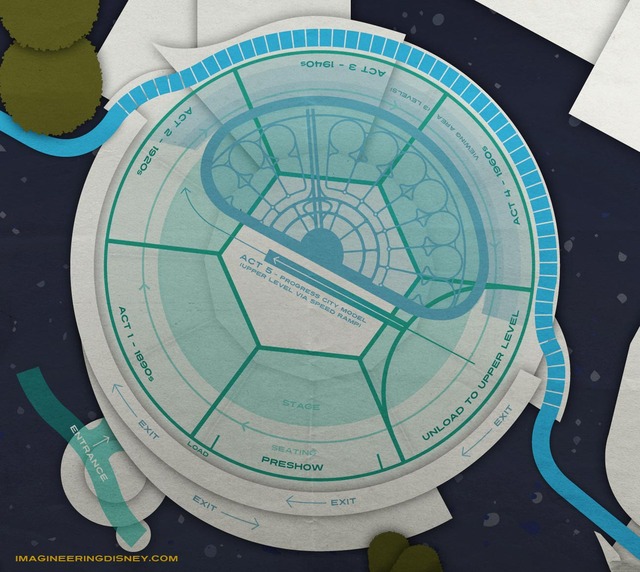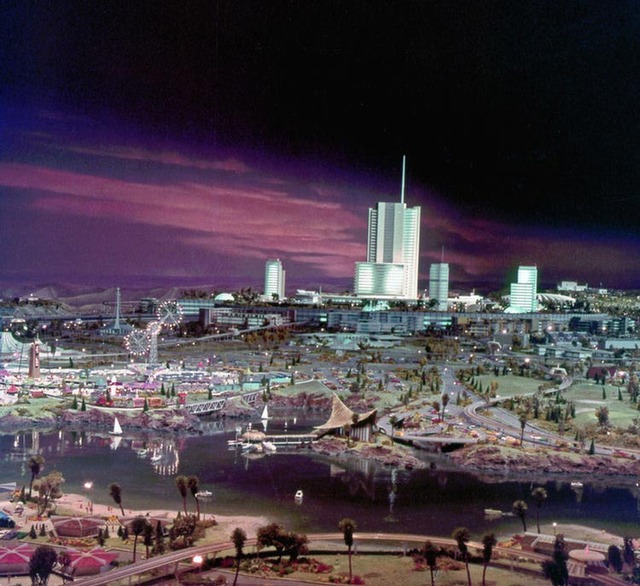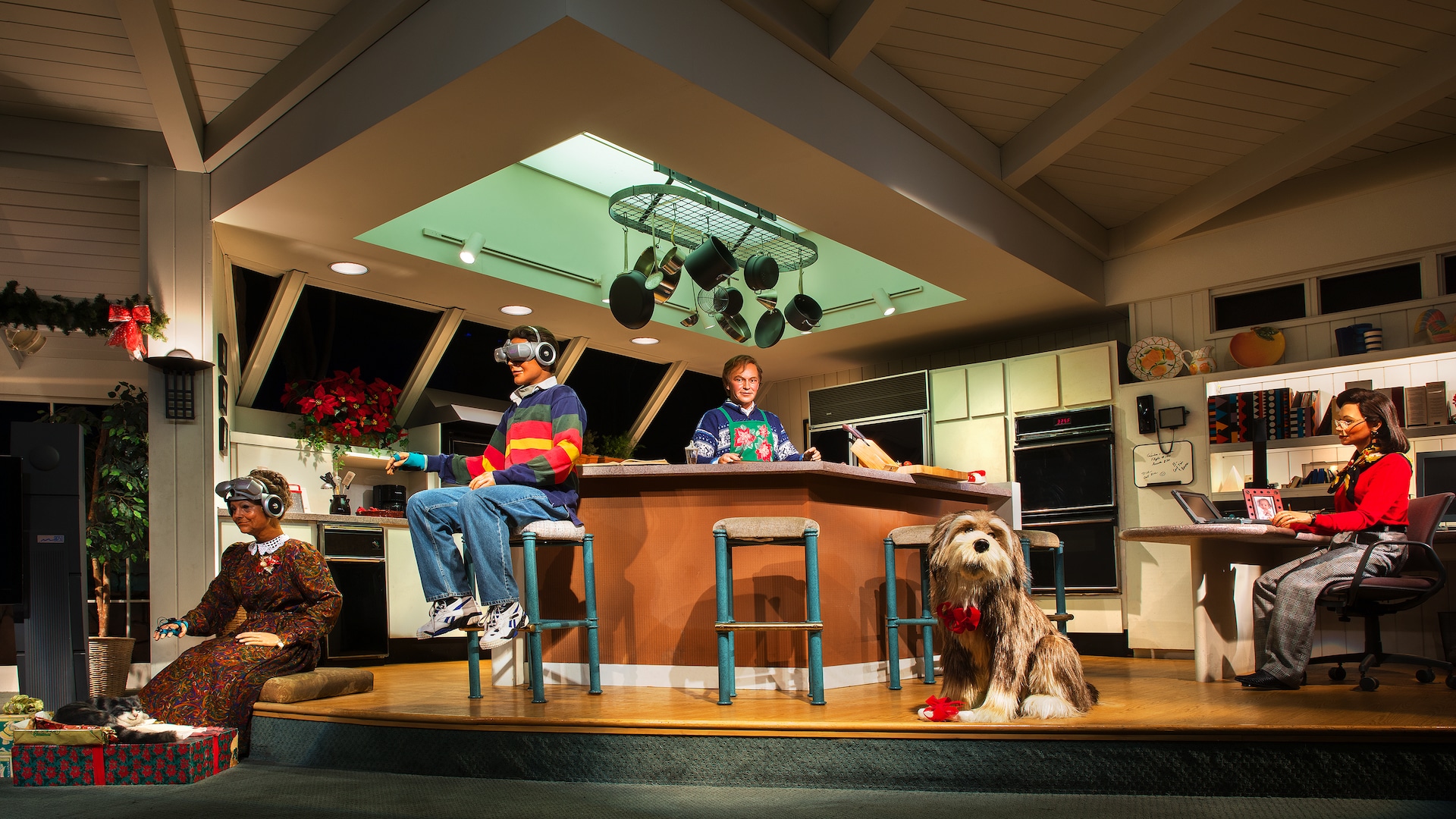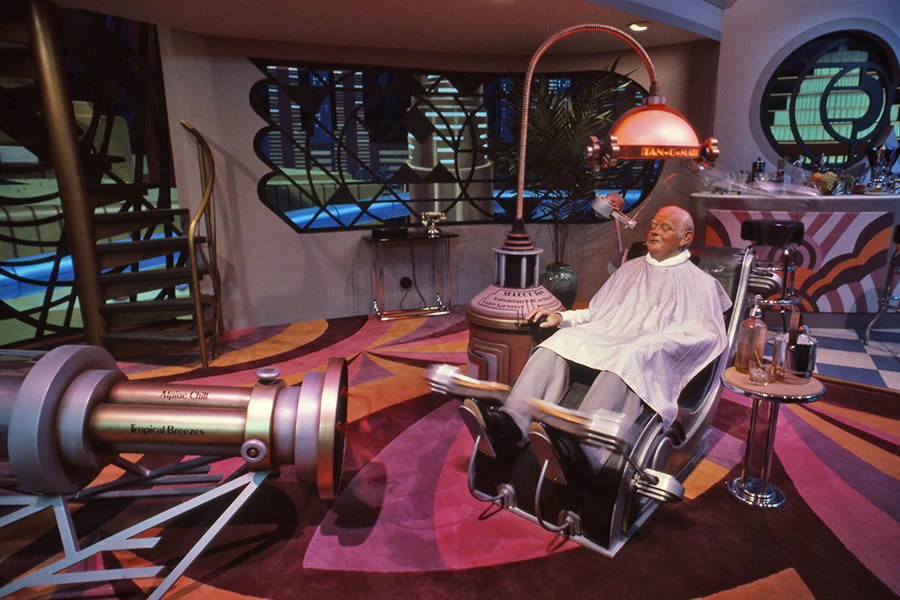Welcome to Extinct Attractions. This week, we’ll be taking a deep dive into one of the most storied attractions in Disney Parks’ history, one with a particular connection to today’s special holiday.
Over the years, the Disney Parks have long been a friend of American patriotism. From Main Street USA to America on Parade, America has always played a huge part in the domestic Disney Park experience. In fact, they were this close to actually making an entire theme park themed solely around America and its history throughout the years. While Disney’s America, never came to fruition, we can still find a lot of Americanism in the parks today, but before we jump to that, we need to go back to the mid 1950s when Disney was looking to expand on a burgeoning Disneyland.

Via All Ears
Announced in 1956, just a year after Disneyland opened, Edison Square was set to be the newest addition to the park that Walt Disney promised would never be completed. The headlining attraction of this mini-land was called Harnessing the Light. In this attraction, guests would have watched mini-shows lead by an Audio-Animatronic figure, who would take guests on a journey from the turn of the century to present day with a series of inventions showcased in each time period. At the time, Disney could not quite get General Electric, the proposed sponsor of the attraction, to commit, so the project hit the shelf along with Edison Square, until more money could be put into the attraction to make it feasible.

Via Wikipedia
Just a few years later, the stars finally aligned for the 1964-1965 New York’s World Fair, where Disney created four magical attractions for various sponsors including the Ford Motor Skyway, Great Moments with Mr. Lincoln and it’s a small world. But the one that we are most interested in today is what Harnessing the Light transformed into, the Carousel of Progress. Opening as a part of General Electric’s Progressland along with the World Fair on April 22, 1964, this attraction quickly became one of the most popular attractions at the entire fair, with consistent waits of over an hour long.
What makes these hour-long waits even more impressive is how the Carousel of Progress can load 200 people every 4 minutes, giving a theoretical hourly ride capacity of 3,000 people. So that means there were more than 3,000 people in line for the attraction at many points, something that seems unfeasible when you look at the attraction today.
But at the time, it is totally understandable that the attraction was that crowded because it was unlike anything that anyone had ever seen. Audio-Animatronics were still in their infancy at the time, so audiences at the time must have been simply gobsmacked to see these human-like figures moving with such ease.
Plus, the show also had the Sherman Brothers’ classic song, “There’s a Great Big Beautiful Tomorrow,” to transition guests from scene to scene. After hearing that song four times throughout the show, it’s nearly impossible to stop yourself from humming along to it as you walk around the rest of the day. The Sherman Brothers referred to it as Walt’s theme, and you can really understand why because of the optimism for the future that Walt and the song share.
Via D23
The show was also in lucky in that they had Disney Legend Rex Allen on hand to record the voice of the father who narrates guests throughout the entire journey. Allen starred in over 40 Disney Westerns and was a great, familiar voice to serve as the guide through time.

Via Epcot Explorer
Once guests had finished the Carousel of Progress, they were ushered upstairs to Walt Disney’s Sky-Dome Spectacular. Here, guests could view a demonstration of a controlled thermonuclear fusion, the only place that this was publicly available to view. I’m going to be honest, I’m not entirely convinced they were actually doing nuclear fusion because that seems way to dangerous to simply be happening in this pavilion, but either way, it was a very impressive set up and created an exciting climax to the experience.
Eventually, the New York World’s Fair had to come to an end, which it did on October 17, 1965. At this point, Walt knew exactly where to move the Carousel of Progress, Disneyland.
Virtually unchanged from the World’s Fair version, the Carousel of Progress officially opened in Disneyland on July 2nd, 1967 along with the rest of New Tomorrowland 1.0. The actual contents of the attraction may have stayed static, but the postshow did get a nice facelift.
Though General Electric did stick around as a sponsor, the postshow was revamped to instead feature an epilogue of sorts where Father and Mother talked about the new place they were living, Progress City. As they narrated about what life was like there, guests could wander around the giant model and take in all the details.
I absolutely love models, so I really wish I would have had the chance to see this entire thing in person. I could see myself spending close to an hour just trying to take in every little detail and trying to discover what Walt had in mind for this fantastic city that he was trying to create. But of course, that chance is long gone, especially with Progress City transforming into the EPCOT we know and love today.

Via Omniluxe
However, Carousel of Progress’s time at the park was destined to come to an end as General Electric saw the rousing success that Walt Disney World was having. They reasoned that almost everyone who went to Disneyland had seen the Carousel of Progress because the park was not as large of a tourist destination, so they insisted that the Disney brass move the attraction across the country to capture this bigger audience. (But America Sings came along to take its place with the same theater, so at least the theater part of it lived on a little longer.)
This time around, the move led to some bigger changes like the rotation of the theater was now counterclockwise inside of clockwise and there was no postshow with Progress City. (Instead, Progress City became a part of the PeopleMover, where it still stands today, albeit a smaller version that you breeze right past.) Andrew Duggan also took over as the voice of the narrator.
But the award for biggest change goes to the theme song being changed to “The Best Time of Your Life,” also penned by the Sherman Brothers. General Electric didn’t want people thinking of buying things in the future. They wanted them focused on the now, so they insisted on this new song to better tell their corporate message.

Via Omniluxe
Over the next few years, the Carousel of Progress went through a few more changes, mainly to its final scene, which moved from being based around Christmas originally to a 1970s New Years theme and then a 1980s New Years theme once it hit 1981. All this time, General Electric continued its sponsorship, but that came to an end in 1985 when the contract was up and GE decided not to renew. At this point, Disney basically went through and scrubbed the entire attraction clean by getting rid of virtually every GE logo throughout the whole show (though if you look closely, you can still spot a few of them today).
Other than the lack of logos, things didn’t change much after GE left. But then a miracle happened in 1993 when Disney decided to give the attraction a lot of love and a major refurbishment.
The biggest and most noticeable difference was a completely revamped final scene that was spearheaded by Disney Legend Marty Sklar. This scene moved the ending into the 21st century and featured automation, VR and more things that were expected to be coming right around the corner.
Plus, they also changed a lot of voice actors, bringing in Jean Shepherd to voice the father, who now finally got a name, John. A lot of other characters also were named, which was especially exciting because now guests had a greater chance to connect with these characters. But my favorite additional voiceover was that Rex Allen got to come back and voice the grandpa, an awesome nod to the original version of the show.
Now all these characters are cool, but the real star of the show is the song, and with General Electric no longer in the way, Disney had the freedom to bring back “There’s a Great Big Beautiful Tomorrow.” I love “The Best Time of Your Life,” but having that original song back made everything feel so perfect and just truly brought the whole show together.
If you’ve never seen this show, well, now is the time. Now is the best time. (Sorry couldn’t resist.) But seriously if you’ve never seen this show, it is definitely worth checking out right now because this video did an awesome job capturing it, and it is one of the most classic Disney attractions out there.
I absolutely love the Carousel of Progress, to the point where I would consider it one of my five favorite attractions at all of Walt Disney World. But … it desperately needs another upgrade. It’s been 26 years since the last major refurbishment to the attraction and it definitely shows. The final scene feels woefully outdated at this point, with a lot the technology having advanced well past the show. Plus, the final scene takes place 70 years later than the previous scene, which makes for a weird transition after only jumping 20 years each time before. So here’s what I propose.
The 1900s and 1940s can stay, but the 1940s scene is going to move over and take place right after the 1900s. Then, we jump to the 1990s with the beginning of the computer age, which I think would be really fun to hear John diatribe about and how things can’t possible get any better. But then there would a final jump to really ground this attraction in Tomorrowland as we hit the 2040s. There are so many awesome technologies coming in the future, so I would love to see some great Disney minds come up with what life will be like at that time.
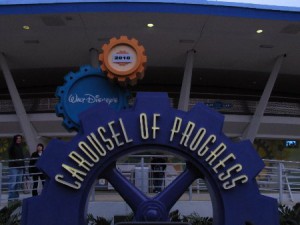
But the sad truth of the matter is Carousel of Progress more likely to go extinct than get that major upgrade anytime soon. In fact, it nearly closed for good in October 2001, with rumors running rampant that a Flying Saucer type ride was going to be put in the space instead. Luckily, the funds fell through for the change and Carousel of Progress has lived on ever since, even moving past the seasonal designation that it had for most of the 2000s.
Over the years, the Carousel of Progress has served as arguably the most influential Disney attraction of all time. The show directly inspired a similar attraction called Meet the World in Tokyo Disneyland and has had homages to it included in movies as diverse as Iron Man 2 and 2019’s Dumbo.
But its biggest legacy is definitely the fact that it got a sequel of sorts in Horizons. This Epcot classic practically picks up where Carousel of Progress leaves off, with a fun, whimsical look at what is coming in the future. No other attraction has been so inspiring that it led to a sequel, so if that doesn’t tell you about Carousel of Progress’s legacy, I don’t know what does.
The Carousel of Progress has stood strong for 55 years now, making it, as Disney likes to say, the longest-running theatrical show in American history. It’s been running for so long, that it is the only attraction at Walt Disney World that Walt himself physically touched, and today it bears his name as Walt Disney’s Carousel of Progress.
It has long been said that the Carousel of Progress was Walt’s favorite attraction, and you can certainly see why with its quest to blend new and old in a way that only he knew how today. One today, we’ll see the Carousel of Progress end its time at the parks, but I hope that occasion doesn’t come anytime soon.
Well, that ends our journey today, but next week you can come on back and see if you got the hints based off these three clues.
- This attraction features an introduction from Steven Spielberg.
- This attraction appeared in three Universal parks around the world, still appearing in one of them.
- This attraction features some unconventional ride vehicles.

Via Providr
Thanks for reading and have a great, big, beautiful day!

